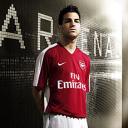A club’s colours and kit are a fundamental part of their tradition and heritage; indeed many would recognise a team because of their uniform before their badge.
Take my side, Arsenal, and the introduction of their famous white sleeves back n the 1930’s. Manager Herbert Chapman introduced white sleeves to the previously all-red Arsenal shirts in 1934 but how this idea came about depends on which source you believe. One version of events has Chapman spotting someone in the Highbury crowd wearing a red sleeveless sweater over a white shirt. A look that he felt it would help the players identify each other on the pitch.
Alternatively, some credit the look to famous cartoonist Tom Webster, who wore a striking blue pullover over a white shirt whilst enjoying a round of golf with the then Chelsea chairman, Claude Kirby. Kirby himself was taken with the idea of adding white sleeves to Chelsea’s shirt, though Chapman upon being told of the look made sure his cherished Arsenal adorned the new style.
Furthermore, it was Chapman who incorporated the badge on to the left hand side of the new shirt and added stripes to the teams socks, reasoning that the distinctive pattern and colours would make team mates more visible and thus, easier to pass to.

This came in for heavy criticism by a lot of Arsenal fans, firstly for having a kit the same colour as Spurs and secondly for what was seen as a pretty shameless campaign by Nike.
It now seems somewhat ironic that ideas that were seen as so innovative back then are now so trivial and more often than not implemented solely for commercial gain.

Similarly the new yellow away shirt, whilst adhering to traditional colours is again the victim of the money men at the head of Nike, associating the strip with the 89′ title winning side. This photo released to promote the new kit ropes in some of the winners on the night of that famous night in Anfield and even features the Division 1 title in the background.
As much as I appreciate the sentiment involved in having Rocastle’s shirt above the trophy it still smacks of shameless corporate advertising. If the trend of basing a shirt on historic events continues (something also seen with Liverpool’s grey and red update of their 80’s away kit) then by 2020 we will be having shirts commemorating last seasons 1-1 draw with Wigan at the JJB.
In this time of rising ticket prices, corporate-named stadiums and excessive foreign investment it feels to me we the fans, Arsenal or otherwise, are again being taken for a ride. Last season Arsenal released a red and blue striped third shirt, a shirt I invested £45 in, only to see the team play in it around about 8/9 times and be scrapped for next season. The purpose? And yet they keep the unfavourable white shirt for the coming campaign.
The sting of several years ago upon Umbro, Manchester United and JJB Sports over the retail prices of football shirts seems to have been cunningly overcome by simply releasing more shirts.
Chelsea last season released the much publicised electric yellow shirt, only to replace this season with a mundane black affair. Surely a purely financial move? They too released a third shirt, though like Arsenal’s it appeared a scarce number of times.
Liverpool this season have released a new home and away kit, with another to be confirmed. Last season they released 2 away shirts, as well as a new home and 2 away shirts the season before.
Ditto Spurs.
Serial offenders Manchester United aren’t even on a par with the likes of these 2 clubs.
I could go on (be thankful you aren’t a Real Madrid fan – a new, practically unchanged kit every season!) but I shan’t bore/offend you(r) club.
I know you could argue that there’s no compulsory need to buy any shirts, that it’s a contribution to the club and that people do get excited by new kits and technological advances. But what of the parents now spending up to £120 a season on replica shirts (before you mention shorts, socks, numbering etc), of those who get fed up with seeing their shirt on the sales rack in JJB for under £20, having spent more than double that mere months earlier? And what of a club’s identity?
Liverpool have in the past 3 seasons had a:
Yellow and red trim away kit
White and green chequered kit
White, red and green trimmed kit
Black and red trim kit
Grey and red trim kit
And a yet to be confirmed aqua blue/green kit
How many more can and will they have? And this isn’t a slight on Liverpool F.C and so on, but on the multi-million pound suppliers like Nike and Adidas who are neglecting fans and club ideals in favour of profit margins and in addition vindicating doing so with tawdry historic references.
The ‘technological advances’ that arrive every year are nothing more than jargon to concur with the elitist image companies are trying to promote within domestic football and on a broader, global scale.
Nike advertise new national kits on their website, describing Brazil’s as:
‘Brazil’s love affair with the World Cup began 50 years ago with the first of their record five victories. The new home shirt reflects that heritage in classic yellow with Brazilian green on the collar, cuffs and a new flash on the side. Made from DRI – FIT to keep you cooler, drier and lighter’.
Essentially the same as nigh on every Nike kit at the moment, bar colouration. And none to different from the one preceding it and more than likely than the next . In many cases the shirt will vary very little, again detracting from the price – why pay another £40 for what is nigh on the same shirt with some minor alterations.
In all seriousness, this may seem a somewhat insignificant matter in the current climate of greedy agents, mercenaries (no names mentioned) and Game 39, but I write this knowing full well that not only will this trend continue and worsen in the coming years but that it represents another victory for big business and money when it comes to football – however negligible it may seem right now.
Add Sportslens to your Google News Feed!
